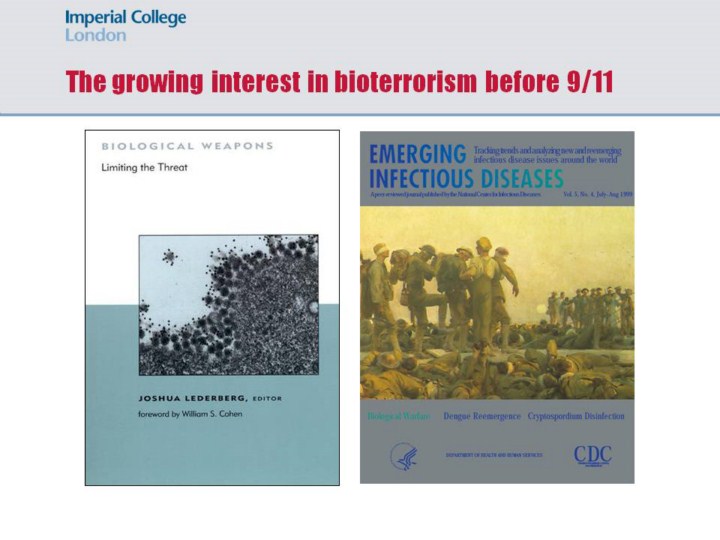| front |1 |2 |3 |4 |5 |6 |7 |8 |9 |10 |11 |12 |13 |14 |15 |16 |17 |18 |review |
 |
By the end of the first Gulf war in 1991, the US Congress had already passed two major statues in an effort to control and prevent the use of biological weapons by domestic and international terrorists as well as by foreign nations: The Biological Weapons Act of 1989 and The Chemical and Biological Weapons Control and Warfare Elimination Act of 1991. Interest in the potential threat of bioweapons gradually increased in the decade between the first Gulf war and the 9/11 and anthrax attacks in 2001. There were fears of both the possible use of bioterrorism against US civilians, and of the possible use of bioweapons in battle by ‘rogue states’ such as Iraq. This pitching up of the risk discourse around bioweapons between 1991 and 2001 mirrors the increasing pitch of the contemporary discourse around emerging infectious diseases, and as in the case of emerging infectious diseases, prompted a range of legislation as well as a massive increase in US government spending on related research.
In response to domestic terrorist attacks in Oklahoma and the World Trade Centre, and to the Aum Shinrikiyo attacks on the Tokyo subway, US counter-terrorism policy was updated in June 1995 as Presidential Decision Directive 39, which singled out as particularly worrying the use of nuclear, biological and chemical weapons (Stern, 1999). This was followed in 1996 by the US Anti-Terrorism Act, and in 1997 the US Congress established a comprehensive regulatory regime, regulated by the CDC, to control the domestic use of hazardous toxins and infectious agents (Ferguson, 1999).
In the same year, the Pentagon awarded a US$322 million ten-year contract for a plan to build up a stockpile of vaccines for smallpox, anthrax and other potential biological threats (Miller et al., 2001), and the then US Secretary of Defense, William S. Cohen, directed an increase in funding for counter-proliferation programs by approximately US$1 billion over five years. Cohen decided to vaccinate all US forces personnel, active and reserve, against anthrax, a plan which would take over seven years to complete. In August 1997, The Journal of the American Medical Association published a themed issue on biological weapons, which was later developed into a book called Biological Weapons: Limiting the threat (Lederberg, 1999) |